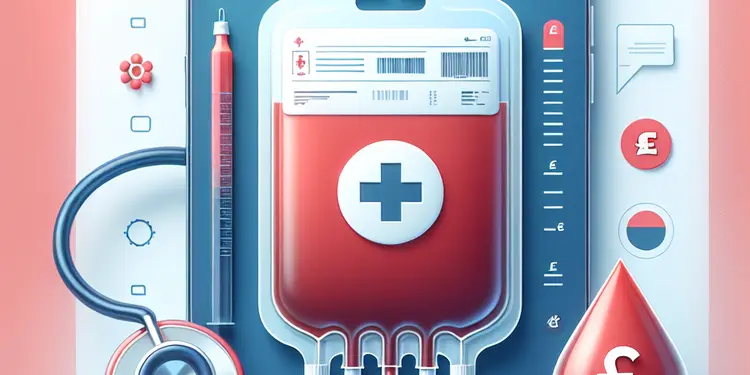
Find Help
More Items From Ergsy search
-
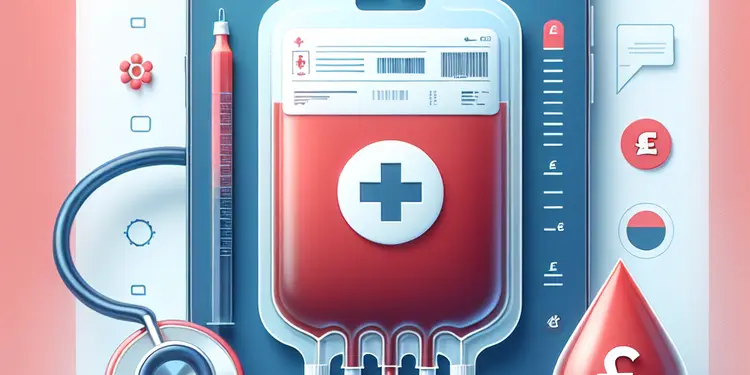
Can bacterial infections be transmitted through blood transfusion?
Relevance: 100%
-

What diseases can be spread by blood transfusions?
Relevance: 62%
-

Blood Product Transfusions
Relevance: 59%
-
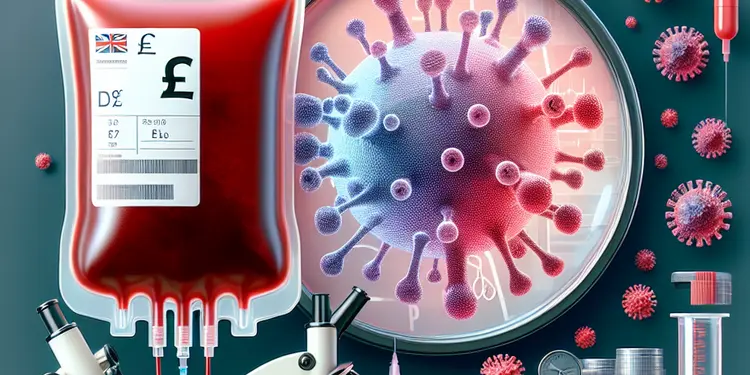
What is the most common disease transmitted by blood transfusion?
Relevance: 58%
-

Blood Transfusion
Relevance: 58%
-

Are there risks associated with blood transfusions?
Relevance: 58%
-
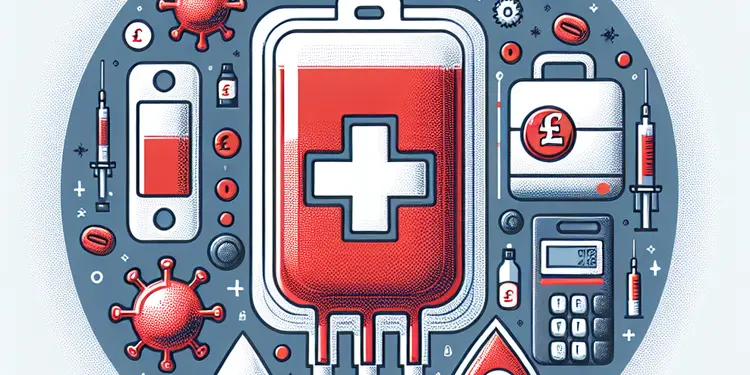
Is HTLV a risk in blood transfusions?
Relevance: 57%
-

What is a blood transfusion?
Relevance: 57%
-

Is Hepatitis B a risk in blood transfusions?
Relevance: 56%
-

Is Chagas disease a concern with blood transfusions?
Relevance: 55%
-
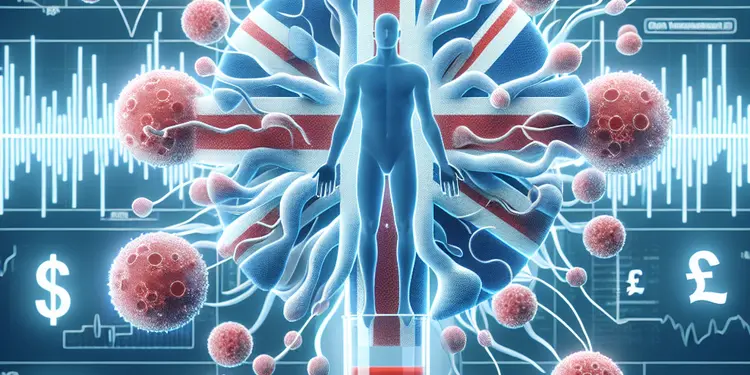
Can syphilis be transmitted via blood transfusion?
Relevance: 54%
-
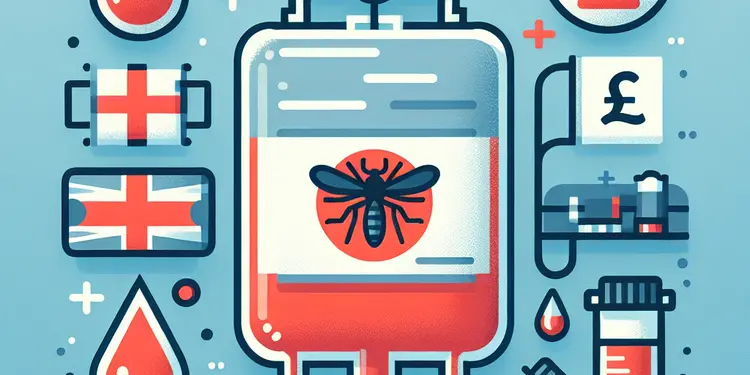
Can Dengue fever be transmitted through blood transfusions?
Relevance: 54%
-

Is Zika virus screened for in blood transfusions?
Relevance: 54%
-

Are there any parasites that can be transmitted through blood transfusions?
Relevance: 53%
-

What types of blood products can be transfused?
Relevance: 52%
-
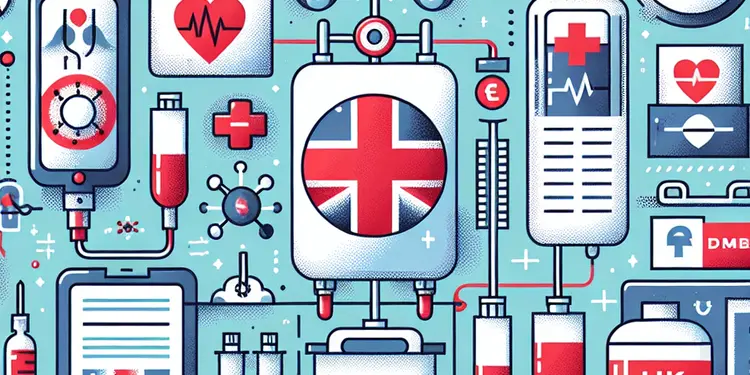
What measures are taken to prevent disease transmission in blood transfusions?
Relevance: 52%
-
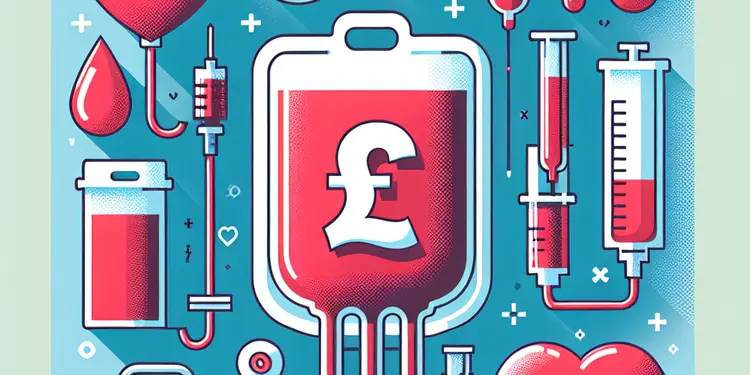
Can HIV be transmitted through blood transfusions?
Relevance: 52%
-

Is there an age limit for receiving blood transfusions?
Relevance: 52%
-

Is malaria still a concern for blood transfusion safety?
Relevance: 51%
-
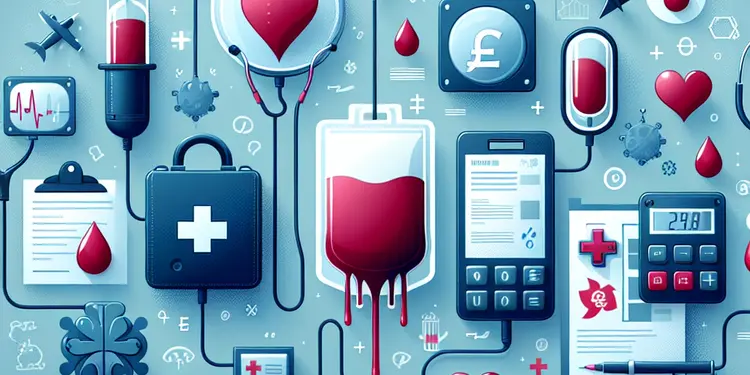
Can certain medical conditions prevent receiving blood transfusions?
Relevance: 51%
-

Can COVID-19 be transmitted through blood transfusions?
Relevance: 51%
-

What are some common reasons blood transfusions are needed?
Relevance: 51%
-

Why might someone need a blood transfusion?
Relevance: 50%
-

How long does a blood transfusion take?
Relevance: 50%
-
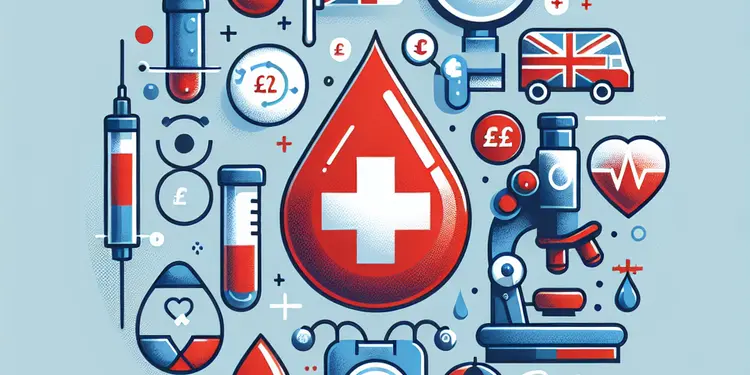
How do healthcare providers match blood for transfusions?
Relevance: 49%
-
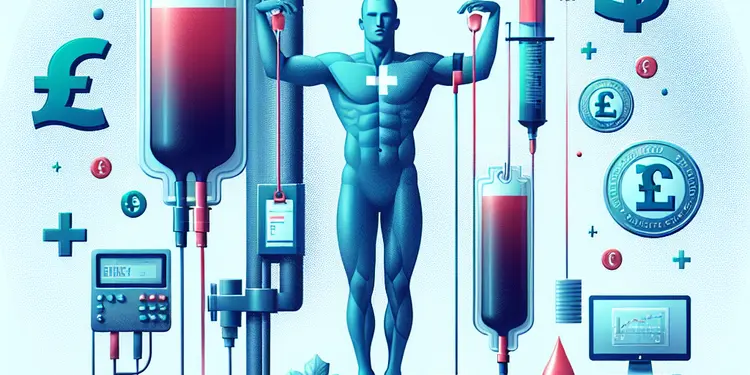
Can someone have a reaction to a mismatched blood transfusion?
Relevance: 48%
-

Can people of any blood type receive a transfusion of any blood type?
Relevance: 48%
-
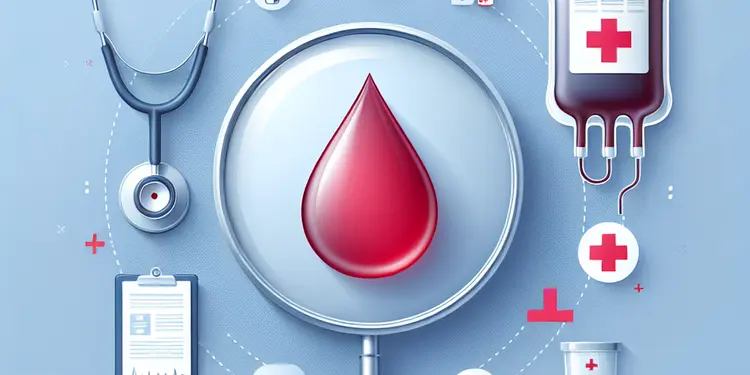
How do doctors determine how much blood is needed for a transfusion?
Relevance: 47%
-
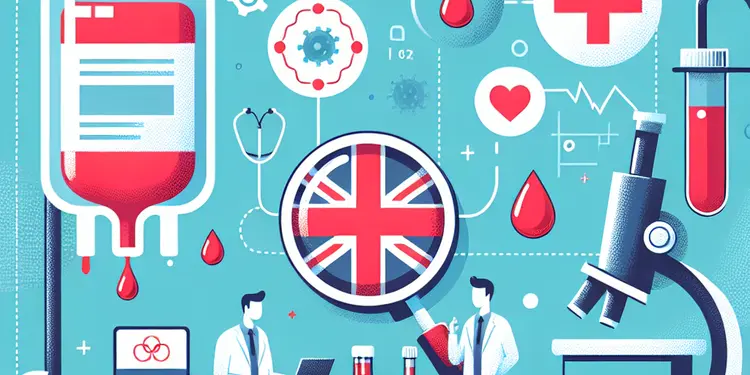
Can you get any prion diseases from blood transfusion?
Relevance: 47%
-

Can cytomegalovirus (CMV) be spread through transfusions?
Relevance: 44%
-

Bacterial vaginosis
Relevance: 44%
-

What is the treatment for bacterial meningitis?
Relevance: 43%
-

What is plasma, and why might it be transfused?
Relevance: 42%
-

How serious is bacterial meningitis?
Relevance: 42%
-

What causes bacterial meningitis?
Relevance: 42%
-

Is blood used for transfusions safe?
Relevance: 42%
-

Are there global differences in screening for blood transfusions?
Relevance: 40%
-

What other viruses are tested for in blood donations?
Relevance: 38%
-

How is blood screened to prevent disease transmission?
Relevance: 38%
-

Can mosquitoes transmit any bacterial diseases in the UK?
Relevance: 34%
Introduction
Bacterial infections can indeed be transmitted through blood transfusions, although such occurrences are rare. The process of blood transfusion involves transferring whole blood or blood components from a donor to a recipient, primarily used to replace lost components due to surgery, injury, or disease. Despite rigorous screening and processing, there is a small risk of bacterial contamination.
Sources of Bacterial Contamination
Bacterial contamination in blood products can originate from several sources. Skin flora from the donor, improper collection techniques, and storage conditions are common culprits. Some bacteria thrive in the nutrient-rich environment of blood products, especially at warmer temperatures. Platelets, stored at room temperature, are particularly vulnerable to bacterial growth compared to red blood cells or plasma, which are refrigerated or frozen.
Screening and Detection
In the UK, stringent guidelines developed by the National Blood Transfusion Service are in place to minimise the risks associated with bacterial infections in blood transfusion. Donors undergo thorough screening and questioning to evaluate their health and risk factors for infections. Additionally, blood products are tested for bacteria using methods such as bacterial culture and advanced systems that detect bacterial metabolites. Despite these safeguards, no process is entirely foolproof.
Prevention and Mitigation Strategies
To further decrease the likelihood of bacterial transmission, blood banks employ various preventive measures. Aseptic technique during collection, use of diversion pouches to collect the initial blood flow, and rapid cooling of blood products help mitigate risks. The introduction of pathogen reduction technology, which inactivates bacteria, viruses, and parasites, is also becoming more prevalent, adding an extra layer of safety.
Symptoms and Management of Transmission
If bacterial contamination occurs and is transfused, the recipient might exhibit symptoms such as fever, rigors, or hypotension soon after transfusion. Healthcare providers are trained to recognise these signs quickly to halt the transfusion and commence appropriate treatment, including broad-spectrum antibiotics and supportive care, reducing potential complications.
Conclusion
While the risk of bacterial infections from blood transfusions is low, it is not zero. Ongoing research and technological advancements in screening and pathogen reduction continue to enhance the safety of blood transfusions in the UK. Patients and healthcare providers can take solace in the rigorous systems in place designed to ensure that blood transfusions remain as safe as possible.
Introduction
Sometimes, bacteria can spread through blood transfusions, but this is not common. Blood transfusion means giving blood from one person (a donor) to another person (a recipient). This usually happens after surgery or injury. Even though we check blood carefully, there is still a tiny risk of bacteria being in the blood.
Where Do Bacteria Come From?
Bacteria can get into blood products in different ways. They might come from the donor's skin, how blood is collected, or how it's stored. Some bacteria like blood because it has lots of nutrients. Platelets are more likely to have bacteria because they are kept at room temperature, unlike other blood parts which are kept cold.
How Do We Check for Bacteria?
In the UK, there are strict rules to keep blood safe from bacteria. Blood donors answer questions about their health, and blood is tested for bacteria. We use special tests to look for bacteria in blood. Even with tests, we can't catch everything, but we try to make it as safe as possible.
How Do We Stop Bacteria?
To keep blood safe, blood banks use special methods. They use clean tools to collect blood and keep blood cool quickly. New technology is helping too. It can kill bacteria and make blood even safer to use.
What Happens if Bacteria Are in the Blood?
If blood with bacteria is used, the person getting the transfusion might feel sick. They could get a fever or feel shaky. Doctors know how to spot these signs and will stop giving blood if this happens. They will treat the person with medicine to help them feel better.
Conclusion
The chance of getting a bacterial infection from blood is very low, but it can happen. Scientists and doctors are always working to make blood transfusions safer. Patients and doctors can feel safe knowing there are many systems to keep blood transfusions safe.
Frequently Asked Questions
Can bacterial infections be transmitted through blood transfusion?
Yes, bacterial infections can be transmitted through blood transfusions, although it is rare due to rigorous screening and testing procedures.
What measures are taken to prevent bacterial infections from being transmitted through blood transfusions?
Blood donors are carefully screened for infections, and donated blood is tested for bacteria and stored under conditions that minimize bacterial growth. Some blood products are also treated to inactivate pathogens.
Which types of bacterial infections are most commonly associated with blood transfusions?
Bacterial contamination of blood products is more common in platelet transfusions because they are stored at room temperature. Bacteria such as Staphylococcus species can occasionally be transmitted.
What is the risk of acquiring a bacterial infection from a blood transfusion?
The risk is very low, estimated to be 1 in several thousand for platelets, but advances in screening and processing have reduced the risks significantly.
How are blood products tested for bacterial contamination?
Blood products, especially platelets, are tested using culture methods or rapid bacterial detection systems before being transfused to patients.
Can red blood cells transmit bacterial infections?
It's less common, but possible. Red blood cells are stored at colder temperatures which slow bacterial growth, reducing the risk of contamination.
Are there symptoms that indicate a bacterial infection from a transfusion?
Symptoms of a bacterial infection from a transfusion can include fever, chills, low blood pressure, and rapid heartbeat soon after the transfusion.
What should be done if a bacterial infection is suspected after a blood transfusion?
Medical attention should be sought immediately. The healthcare team can perform tests to confirm the infection and provide appropriate treatment.
Are certain populations more at risk for bacterial infections from blood transfusions?
Patients with weakened immune systems or those receiving multiple transfusions may be at a slightly higher risk, although the overall risk remains low.
Can bacterial infections in blood transfusions be treated?
Yes, if a bacterial infection occurs, it can often be treated with antibiotics. Early detection and treatment are crucial for the best outcomes.
Do all components of blood carry the same risk for bacterial transmission?
No, platelets have a higher risk due to storage conditions, while red blood cells and plasma have lower risks because they are stored at colder temperatures.
How effective are current screening methods in preventing bacterial infections in transfusions?
Screening methods are highly effective but not foolproof. Continuous advancements and stringent protocols help maintain safety in blood transfusions.
Has the risk of bacterial transmission from blood transfusions changed over time?
Yes, the risk has decreased over time due to improved screening, testing methods, and overall blood safety practices.
Is there a difference in bacterial contamination risk between whole blood and blood components?
Yes, different blood components have different risks, with platelets having the highest risk due to room temperature storage.
Are there any new technologies to minimize bacterial infections in blood transfusions?
Yes, technologies such as pathogen reduction techniques and improved bacterial detection systems are used to further minimize risks.
Can donors with bacterial infections donate blood?
No, donors with known bacterial infections are typically deferred from donating to prevent the risk of transmission.
What are the regulations regarding bacterial testing in blood banks?
Blood banks must comply with regulatory standards that mandate testing for bacteria, especially in platelets, to ensure blood safety.
How long can bacteria survive in stored blood products?
Bacteria can survive the storage period, especially if they are in platelets stored at room temperature, which is why testing is crucial.
Is donor blood safety monitored continuously?
Yes, continuous monitoring, regular audits, and quality control processes ensure that blood safety is maintained at all times.
Can bacterial infections in transfusions be completely eliminated?
While current technology cannot completely eliminate the risk, continuous improvements in screening and treatment keep it extremely low.
Can you get a bacterial infection from a blood transfusion?
Blood transfusion is when you get blood from someone else.
Sometimes, there are tiny germs called bacteria in the blood. These germs can make you sick. This is called a bacterial infection.
Doctors are very careful to check the blood for germs. But it is still possible, even if it’s very rare.
If you have questions, talk to your doctor or nurse. They can help you understand.
If reading is hard, you can ask someone to read aloud. You can also try using tools that read text for you on a computer or phone.
Yes, sometimes bacteria can be passed on through blood transfusions. But this doesn't happen often because the blood is checked very carefully.
How do we stop germs from spreading through blood transfusions?
When blood is given to someone else, we check it to keep it safe. This helps stop germs from spreading. Here are some ways we do this:
- Test the blood: We test the blood to make sure it is free from bad germs.
- Clean tools: We use clean needles and bags to collect and give blood.
- Healthy donors: We only take blood from people who are healthy.
If you want help understanding, you can:
- Ask someone to read it with you.
- Use apps that read text out loud.
Blood donors are checked to make sure they do not have infections. The blood they give is tested to make sure there are no bad germs. The blood is kept in a special way so germs can't grow. Some blood is treated to make sure any bad things in it are killed.
What germs in the blood are often linked to getting blood from someone else?
Bacteria can get into blood used for transfusions. This happens more often with platelets. Platelets are kept at room temperature, which can let bacteria grow. Sometimes, bacteria like Staphylococcus can be passed on this way.
To make this easier to understand, you can use tools that read text out loud. This can help if reading is hard. Also, talking about it with someone else can make it clearer.
Can you get a germ infection from a blood transfusion?
Here are some ways to help you understand:
- Break the information into smaller parts.
- Use pictures or videos to learn.
- Ask someone to explain it to you.
The chance of something bad happening is very small. It's like 1 in a few thousand for platelets. Scientists have found new ways to check and clean things, which makes it even safer now.
How do doctors check blood for bacteria?
Doctors need to make sure blood is safe. They test blood to check it doesn't have germs called bacteria. Here is how they do it:
- They take a little bit of blood.
- They look at it under a microscope.
- They use special tests to find any bad germs.
Tools that can help you understand more:
- Videos that show how tests are done.
- Pictures of germs and blood tests.
If you want to know more, ask a doctor or nurse for help.
Before blood is given to people, it is important to make sure it is safe. Blood parts, like platelets, are checked for germs using special tests. These tests can be slow or fast. This helps keep people healthy.
Can red blood cells spread germs?
It can happen, but it's not very common. Red blood cells are kept in the cold. This makes germs grow slower, so they are less likely to get dirty.
What signs show a bacterial infection from a blood transfusion?
If you get blood from another person, sometimes you might get a germ that makes you sick. This is called a bacterial infection.
Here are some signs to look out for:
- Feeling very hot or cold
- Your heart beating fast
- Feeling tired or weak
- Pain in your stomach or muscles
- Feeling sick or throwing up
If you feel like this after getting blood, tell a grown-up or a doctor!
Helpful things to do:
- Ask someone to help you read tough words
- Use pictures or drawings to understand better
- Talk to someone about your feelings or fears
After getting a blood transfusion, you might feel sick if there is a bad bacteria infection.
You might have a fever, which means feeling very hot.
You might get chills and feel very cold.
Your heart might beat very fast.
Your blood pressure, which is the amount of force your blood pushes on your veins, might drop and make you feel weak.
If you feel any of these things, tell a grown-up or a doctor quickly.
What to do if you think there is an infection after a blood transfusion?
If you think there might be an infection after getting blood, tell a doctor right away. They can check and help you feel better.
You can use simple language books or ask a friend to help you understand. These tools can make things easier. Always ask questions if you do not understand something.
Go to the doctor or hospital right away. They can do tests to see if you are sick and give you the right medicine to help you get better.
Who is more likely to get a bacterial infection from a blood transfusion?
Some people might get sick from bacteria in blood during a transfusion.
These people might have a higher risk:
- People with weak bodies
- People with other health problems
- Older people
If you are worried, talk to your doctor.
Use tools like spell checkers and read-aloud apps to help understand better.
People who are sick and get sick a lot or have a weak body defence can have a bit more chance of getting sick from a blood transfusion. But the chance of this happening is still very small.
Can you treat a bacterial infection from a blood transfusion?
Yes, if you get a sickness from bacteria, medicine called antibiotics can often help. It is important to find and treat the sickness early for the best results.
Do all parts of blood have the same chance of spreading germs?
Blood is made of different parts. These parts can spread germs to other people.
Some parts of blood have a higher chance of spreading germs than others. Not all blood parts have the same risk.
If you need help reading, you can use:
- A pointer or finger to follow along as you read.
- An adult or friend to read with you.
- Pictures or videos that explain the topic.
No, platelets have more germs because they are kept warm. Red blood cells and plasma have fewer germs because they are kept cold.
Do current tests stop infections in blood transfusions?
Doctors check blood before it is given to someone else. They want to make sure it is safe. They look for bad germs called bacteria.
Sometimes, these tests work well. Other times, germs might slip through. It is like using a net to catch fish. Some small fish can get away.
Doctors and scientists are always trying to make better tests. They want to stop all germs from causing sickness.
If you want help reading, you can:
- Ask someone to read with you.
- Use reading apps that read out loud.
- Use simple word dictionaries.
Tests to check blood are very good, but not perfect. New ways and careful rules help keep blood transfusions safe.
Has the risk of germs spreading from blood transfusions changed over time?
A blood transfusion gives a person blood from another person. We want to know if the chance of germs getting passed in blood transfusions is different now than it was before.
- Germs: Tiny living things that can make us sick.
- Blood transfusion: Giving blood from one person to another person.
For help with reading or understanding, you can:
- Ask someone to read with you.
- Use a tool to read the text out loud.
- Break the text into smaller parts.
Yes, the risk is lower now because we have better ways to check and test the blood. We are also better at keeping blood safe.
Are Whole Blood and Blood Parts the Same with Germ Risks?
When we talk about blood, we mean the red liquid in our bodies. Sometimes, people need blood parts, like just red cells or just plasma.
Both whole blood and blood parts can have germs. We want to know if one has more germs than the other.
If you are not sure about words or ideas, try using a dictionary with simple explanations. You can also ask someone to help explain.
Yes, different parts of blood have different risks. Platelets have the most risk because they are kept at room temperature.
Are there new ways to stop infections in blood transfusions?
There are new tools and methods to help stop infections when giving blood. These can make blood safer.
Some of these new tools use special lights or filters. The lights or filters clean the blood. They remove or kill germs.
If you want to know more, here are some tips:
- Ask a doctor to explain new tools for safe blood.
- Use videos or pictures to understand better.
- Look up helpful websites for clear information.
Yes, there are special tools to help make things safer. These tools can find and reduce germs and bacteria.
Can people with an infection give blood?
If you are sick with germs or have an infection, you should not give blood.
Wait until you are feeling better and the germs are gone before you donate blood.
If you are unsure, you can ask a doctor or call a blood donation center for help.
It is important to give blood only when you are healthy to keep everyone safe.
No, people who have infections from germs cannot usually give blood. This is to keep germs from spreading to other people.
What are the rules for testing blood for germs at blood banks?
Blood banks need to make sure blood is safe. They have to test blood for germs, called bacteria, before it is given to someone. This keeps people healthy.
Some tools can help understand this better. You might find pictures or videos useful. Reading tools can also help if you read the words out loud or use audiobooks.
Blood banks have to follow special rules. These rules say they must check for germs in blood. This is very important for platelets. This helps keep blood safe for people who need it.
How long can germs live in stored blood?
Germs can be tiny bugs that make you sick. This question asks how long they can stay alive in blood that is kept for later use.
Sometimes we keep blood in bags to help people who need it.
Doctors check the blood to make sure it is safe.
Using a magnifying glass can help see germs.
Bacteria can stay alive when blood is kept, especially in platelets at room temperature. That's why testing is very important.
Do doctors check if donor blood is safe all the time?
Yes, we keep blood safe by checking it all the time. We also do regular checks to make sure everything is okay. This helps us keep the blood safe always.
Can we stop all germs in blood transfusions?
Today, technology can't make the risk go away completely. But it is much better now at checking and treating, so the risk is very small.
Useful Links
- Ergsy carfully checks the information in the videos we provide here.
- Videos shown by Youtube after a video has completed, have NOT been reviewed by ERGSY.
- To view, click the arrow in centre of video.
- Most of the videos you find here will have subtitles and/or closed captions available.
- You may need to turn these on, and choose your preferred language.
- Go to the video you'd like to watch.
- If closed captions (CC) are available, settings will be visible on the bottom right of the video player.
- To turn on Captions, click settings .
- To turn off Captions, click settings again.
More Items From Ergsy search
-

Can bacterial infections be transmitted through blood transfusion?
Relevance: 100%
-

What diseases can be spread by blood transfusions?
Relevance: 62%
-

Blood Product Transfusions
Relevance: 59%
-

What is the most common disease transmitted by blood transfusion?
Relevance: 58%
-

Blood Transfusion
Relevance: 58%
-

Are there risks associated with blood transfusions?
Relevance: 58%
-

Is HTLV a risk in blood transfusions?
Relevance: 57%
-

What is a blood transfusion?
Relevance: 57%
-

Is Hepatitis B a risk in blood transfusions?
Relevance: 56%
-

Is Chagas disease a concern with blood transfusions?
Relevance: 55%
-

Can syphilis be transmitted via blood transfusion?
Relevance: 54%
-

Can Dengue fever be transmitted through blood transfusions?
Relevance: 54%
-

Is Zika virus screened for in blood transfusions?
Relevance: 54%
-

Are there any parasites that can be transmitted through blood transfusions?
Relevance: 53%
-

What types of blood products can be transfused?
Relevance: 52%
-

What measures are taken to prevent disease transmission in blood transfusions?
Relevance: 52%
-

Can HIV be transmitted through blood transfusions?
Relevance: 52%
-

Is there an age limit for receiving blood transfusions?
Relevance: 52%
-

Is malaria still a concern for blood transfusion safety?
Relevance: 51%
-

Can certain medical conditions prevent receiving blood transfusions?
Relevance: 51%
-

Can COVID-19 be transmitted through blood transfusions?
Relevance: 51%
-

What are some common reasons blood transfusions are needed?
Relevance: 51%
-

Why might someone need a blood transfusion?
Relevance: 50%
-

How long does a blood transfusion take?
Relevance: 50%
-

How do healthcare providers match blood for transfusions?
Relevance: 49%
-

Can someone have a reaction to a mismatched blood transfusion?
Relevance: 48%
-

Can people of any blood type receive a transfusion of any blood type?
Relevance: 48%
-

How do doctors determine how much blood is needed for a transfusion?
Relevance: 47%
-

Can you get any prion diseases from blood transfusion?
Relevance: 47%
-

Can cytomegalovirus (CMV) be spread through transfusions?
Relevance: 44%
-

Bacterial vaginosis
Relevance: 44%
-

What is the treatment for bacterial meningitis?
Relevance: 43%
-

What is plasma, and why might it be transfused?
Relevance: 42%
-

How serious is bacterial meningitis?
Relevance: 42%
-

What causes bacterial meningitis?
Relevance: 42%
-

Is blood used for transfusions safe?
Relevance: 42%
-

Are there global differences in screening for blood transfusions?
Relevance: 40%
-

What other viruses are tested for in blood donations?
Relevance: 38%
-

How is blood screened to prevent disease transmission?
Relevance: 38%
-

Can mosquitoes transmit any bacterial diseases in the UK?
Relevance: 34%


